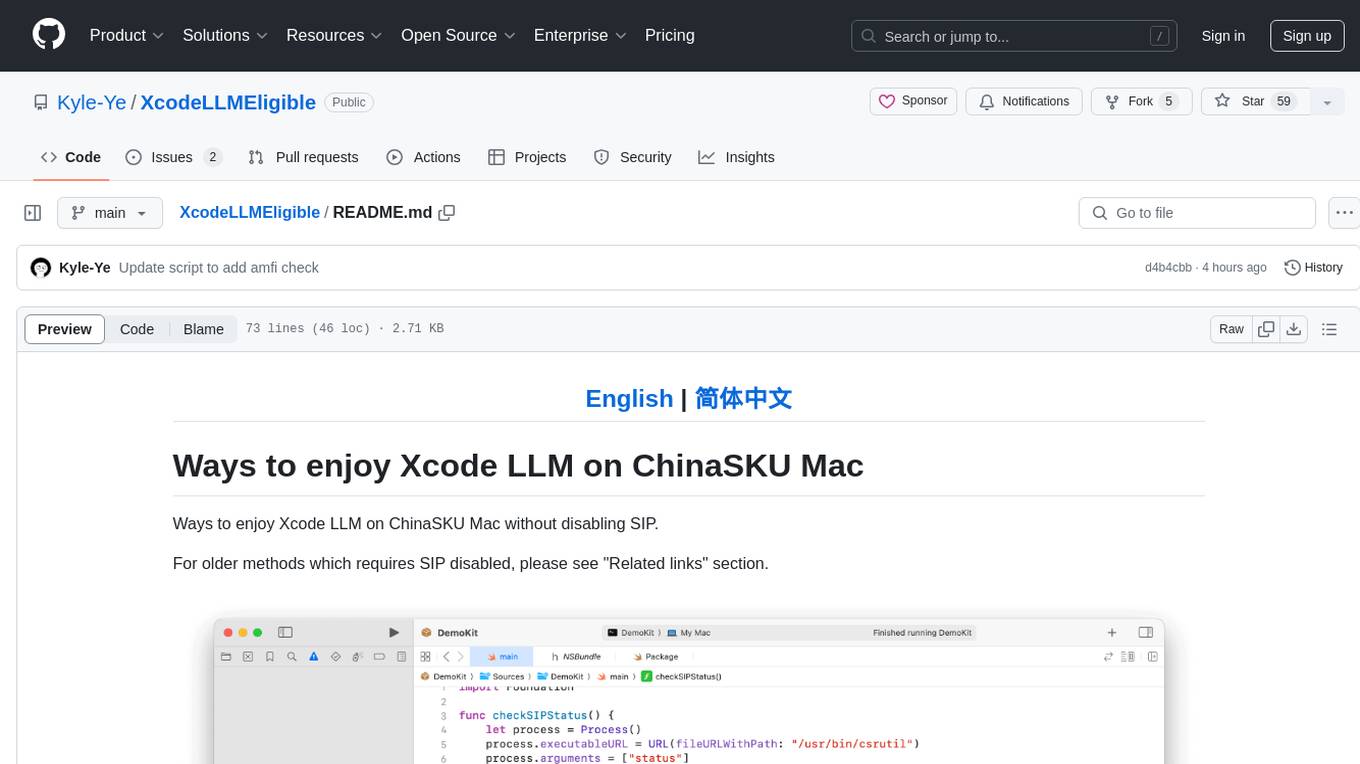Best AI tools for< Uninstall Xcode Llm >
0 - AI tool Sites
No tools available
1 - Open Source AI Tools

XcodeLLMEligible
XcodeLLMEligible is a project that provides ways to enjoy Xcode LLM on ChinaSKU Mac without disabling SIP. It offers methods for script execution and manual execution, allowing users to override eligibility service features. The project is for learning and research purposes only, and users are responsible for compliance with applicable laws. The author disclaims any responsibility for consequences arising from the use of the project.
github
: 2.9k
0 - OpenAI Gpts
No tools available